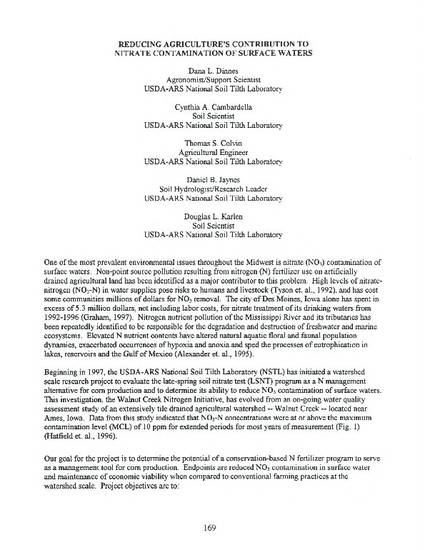
One of the most prevalent environmental issues throughout the Midwest is nitrate (N03) contamination of surface waters. Non-point source pollution resulting from nitrogen (N) fertilizer use on artificially drained agricultural land has been identified as a major contributor to this problem. High levels of nitratenitrogen (N03-N) in water supplies pose risks to humans and livestock (Tyson et. al., 1992), and has cost some communities millions of dollars for N03 removal. The city of Des Moines, Iowa alone has spent in excess of 5.3 million dollars, not including labor costs, for nitrate treatment of its drinking waters from 1992-1996 (Graham, 1997). Nitrogen nutrient pollution of the Mississippi River and its tributaries has been repeatedly identified to be responsible for the degradation and destruction of freshwater and marine ecosystems. Elevated N nutrient contents have altered natural aquatic floral and faunal population dynamics, exacerbated occurrences of hypoxia and anoxia and sped the processes of eutrophication in lakes, reservoirs and the Gulf of Mexico (Alexander et. al., 1995).
Available at: http://works.bepress.com/douglas_karlen/80/
